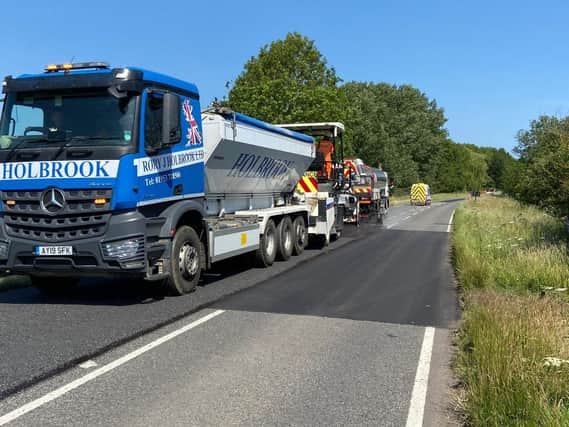Transport for Bucks 'surface dressing programme' set to start this week


The process of surface dressing involves hot asphalt being sprayed onto the surface of the road, followed by the application of chippings which are then rolled in.
The council say this cost-effective way of maintaining a road, restores the skid resistance and seals the surface, while extending the life of the road by up to ten years.
Advertisement
Hide AdAdvertisement
Hide AdSurface dressing also contributes towards pothole prevention, by creating a waterproof seal that stops surface water getting into the road structure.
Once surface dressing has been completed, the road is swept at regular intervals to remove the majority of loose chippings from the new surface which can then be driven on almost immediately.
Buckinghamshire Council Cabinet Member for Transport, Nick Naylor said:
‘TfB’s efforts to keep the roads in a usable and safe condition during this time have been brilliant, especially with the challenges that social distancing brings to our crews. We are thrilled that the Etnyre Chipper Spreader is back again this year, enabling the work to be done in less time, and with a better finish. Well done TfB.’
Advertisement
Hide AdAdvertisement
Hide AdIn the pictures: The Etnyre Chipper Spreader in action during 2019.
TfB will be working with their contractor, Eurovia Specialist Treatments, using an innovative piece of equipment, the Etnyre Chipper Spreader, to carry out surface dressing.
The machine has the capability to spread the treatment across a carriageway width of up to 6.1m and was first used in Buckinghamshire last year.
The advanced on-board computer manages the rate of spread of the chippings so that material usage can be improved.
Advertisement
Hide AdAdvertisement
Hide AdThe speed of the surface dressing process can also be varied, improving efficiency on roads where the machine can be fully extended.
Using the Etnyre Chipper Spreader means that some roads in Buckinghamshire can be treated in one pass, minimising or even eliminating joints, which reduces road closure time and improves the effectiveness of treatment.
Roads included in the surface dressing programme have been carefully selected with guidance from our Asset Management team, who have worked in conjunction with councillors and local area technicians (LATs).
LATs have a broad technical knowledge of roads around the county and our councillors have an in-depth knowledge of their local area – combined, they’re able to select the roads that are most in need of repair in order to keep the public safe and the network moving.
Advertisement
Hide AdAdvertisement
Hide AdAn advisory reduced speed limit is put in place to allow traffic to push the remaining chippings into the asphalt, before the site has a final sweep after seven days. After this, the road markings can then be re-painted.
With the advisory speed limit in place, we do ask that drivers take care and ensure they keep their speeds down. This is not only to help push the chippings into the asphalt, but also for their own safety.